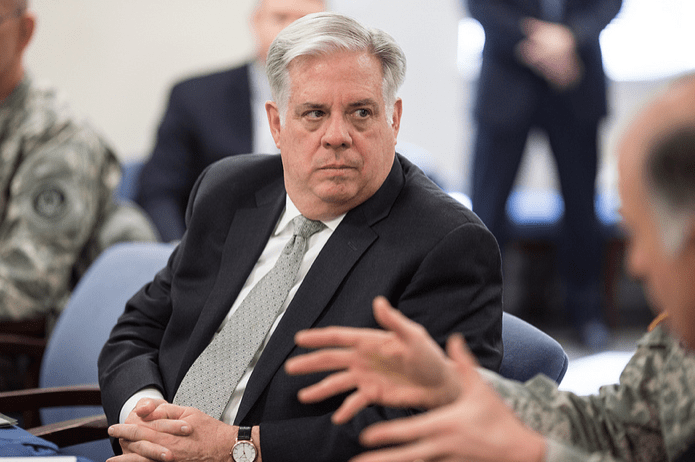This week, Baltimore's MTA ordered an emergency shutdown of the city's Metro SubwayLink, a 15-mile route that serves about 40,000 trips each weekday and the city's only subway line.
The metro will remain closed for 30 days for track repairs. Workers were inspecting tracks on Sunday when they discovered a critical but unspecified defect.
With almost no advance warning or planning, the closure blindsided transit riders and led to massive disruption and confusion yesterday, the Baltimore Sun reports.
The replacement service relies on private shuttle buses. Governor Larry Hogan offered $2.2 million in emergency funds to help cover fares. But the MTA hasn't even had time to install signs telling riders where to go. The situation is upending the lives of riders like Tameka Davis, a 41-year-old nurse interviewed by the Sun, who said she lost 45 minutes to delays.
It's a story that highlights how Maryland politicians and agency officials have neglected basic transit maintenance on one of the most important routes in the state.
According to WBAL, repairs were scheduled for this summer. In the meantime, the MTA had dramatically reduced train speeds, slowing service.
Hogan, who's been governor three-and-a-half years, blamed previous administrations for the poor track conditions.
But David McClure, president of Amalgamated Transit Union 1300, told WBAL that the union had warned state officials about track problems since 2016, and that responsibility falls squarely on Hogan.
"It's like Baltimore doesn't exist to this administration," he told the station.
It's a critique that squares with the rest of Hogan's record on Baltimore transit.
One of Hogan's first acts was to unilaterally withdraw state support for the city's Red Line rail project, which was shovel ready at the time of his election. Baltimore leaders had spent $230 million and the better part of a decade planning the $2.9 billion project, which would have connected some of the city's low-income black neighborhoods to job clusters. Meanwhile, Hogan allowed the Purple Line project in Maryland's DC suburbs to proceed.
A complaint by the NAACP Legal Defense Fund held that Hogan's decision discriminated against Baltimore's black neighborhoods. U.S. DOT agreed to evaluate the complaint in the waning days of the Obama administration, but it was snuffed out under Trump.
After killing the Red Line, Hogan offered Baltimore $135 million for bus system upgrades. While helpful, it was no substitute for a much-need light rail link, and advocates characterized it as a "consolation prize."
Meanwhile, Hogan's purported fiscal prudence -- he claimed the state couldn't afford the Red Line -- has not carried over to highways. His extravagant $9 billion road expansion plan will supposedly be paid for by tolls but exposes Maryland taxpayers to huge amount of risk if the assumptions underpinning the highway projects don't pan out.







